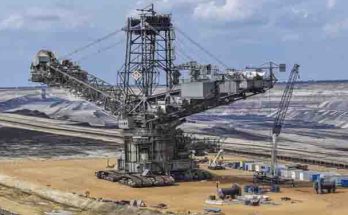 Imports of finished stainless steel products into South Africa surged by 44% in 2016, a survey by Southern African Stainless Steel Development Association (sassda) has revealed.
Imports of finished stainless steel products into South Africa surged by 44% in 2016, a survey by Southern African Stainless Steel Development Association (sassda) has revealed.
This was largely owing to a flood of imported product, primarily from China. In comparison, the export of finished products dropped by 20%.
Further, the country’s R15-billion stainless steel industry has also felt the strain of a contraction in its consumption figures in the last two years, also caused by a flood of Asian imports, a drop in the export of finished products and the resultant huge decrease in the conversion of primary to finished products.
Sassda executive director John Tarboton noted in a statement issued on Wednesday that, whereas South Africa was still a net exporter of stainless steel finished products in 2015, having exported 8 000 t more than it imported, the country now imported 40 000 t of stainless steel finished products more than it exported, therefore running a trade deficit on stainless steel finished products.
“Our declining apparent consumption is a concern. Prior to 2015, our figures mirrored what was going on in the rest of the world, whereas now we are deviating from the global trend,” he added.
Looking at the value and output of the local market, Tarboton explained that apparent consumption last year was just over 130 000 t in terms of primary product, which represents a value of R4.6-billion based on an average cost of $35 000/t. The conversion of that product – costed at twice that of primary product value – equals an additional R9.2-billion, which results in the total value of the local stainless industry of close to R15-billion.
In terms of physical output, the national average is currently 4 t/y for each worker, which means about 32 000 people are employed in the conversion of stainless steel primary products to finished products.
Overall, the statistics show that the stainless steel market will continue to contract this year. The forecast is showing zero primary, nonproducer exports and so apparent consumption may return closer to primary supply into the market.
At present, the forecast shows similar primary supply for 2017 as 2016.
A longer-term comparison of 2015 versus 2016 reveals that primary supply which includes sheet, coil and plate stainless steel – dropped by 11% in 2016 or 20 000 t and, unfortunately, the apparent consumption figure – which is the amount of stainless steel expected to be converted to a finished product – declined by 31% in 2016, as a result of destocking of primary products and the reversal of finished products trade balance.
“The general view was that the economic climate has resulted in an improved global outlook for stainless steel. This is because, since late 2016, the commodity crisis may have reached its worse point and may have turned a corner, which means we could start to see an improvement, particularly in mining investments, something that our market is seeing glimpses of.”
For 2016, the International Stainless Steel Forum reported that the global growth rate of the stainless steel market was at just over 10%. Virtually all that growth occurred in China, which, in 2001, had zero share of global production, compared with 54% in 2016.
“I had hoped that after 2014, it would start plateauing to just over 50% but it has started to increase again towards the 60% level so this is a concern to our stainless steel industry,” commented Tarboton.
He added; “Fortunately, forecasts for the rest of the world are looking better. Our region is predicted to grow at 1.2% in 2017 and 1.6% in 2018, which represents a more optimistic outlook than has been the case for the last nine years.”



